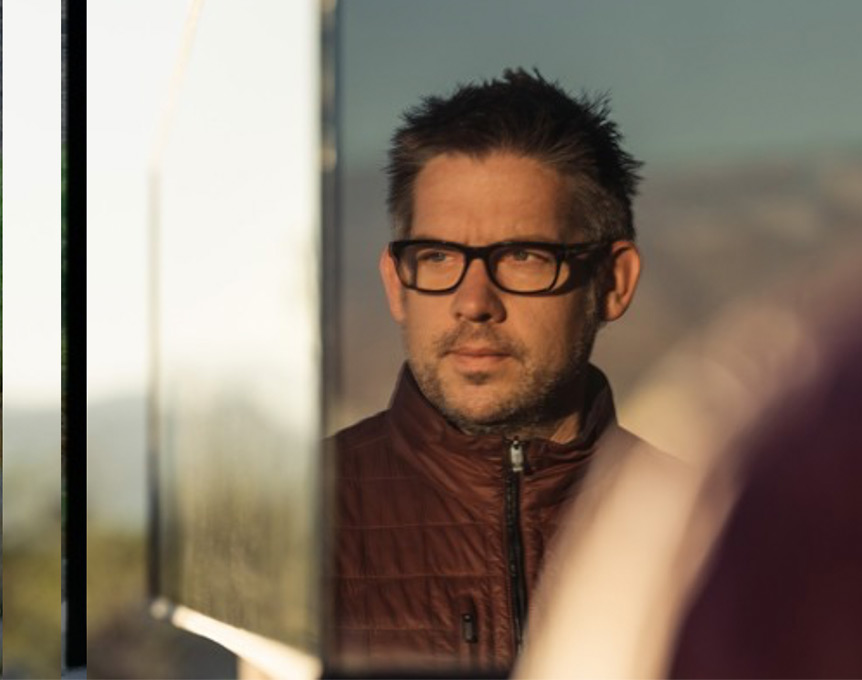Taking time to stop and sit within the big vistas and to notice each tree and rock and ripple of earth promotes a kind of intimacy. “Oftentimes,” Lockyer notes, “we find that the site becomes more of the star of the show.”
A good example is the Schnabel Family Retreat, which is one of Lockyer’s favorites. Studio AR&D handled all design as well as construction, handcrafted much of the detail, and designed the landscaping.
The building site is an acre of land on a hillside with views of the San Jacinto Mountains rising on one side and the Coachella Valley falling away on the other.
“The site was covered with boulders,” he recalls. “We exported about 6 million pounds of them, and then each boulder that remained, we either picked it up, rotated it, reset it or moved it to the other side of the property, providing a building that flows into the terrain in some places and launches off the hillside in others.”
From the inside, sliding glass walls and doors as well as windows and glass panels frame views of boulders and desert shrubs and trees, or open wide onto big vistas of mountains and valleys. The long glass living room wall is penetrated by massive rocks that are both inside and outside the home and support a giant fireplace.
It’s a style of architecture that brings the great outdoors indoors and erects a building that’s completely at home in the landscape.
The project earned an American Architecture Award in 2016.
Lockyer sums up the direction that he and his team are looking: “We strive for simplicity in materials and form, and then maybe frame something outside like a water feature, a tree or the terrain itself—or sometimes we make a space that’s open to the sky. The building allows those things to sing a bit more and really complement the architecture itself.”


